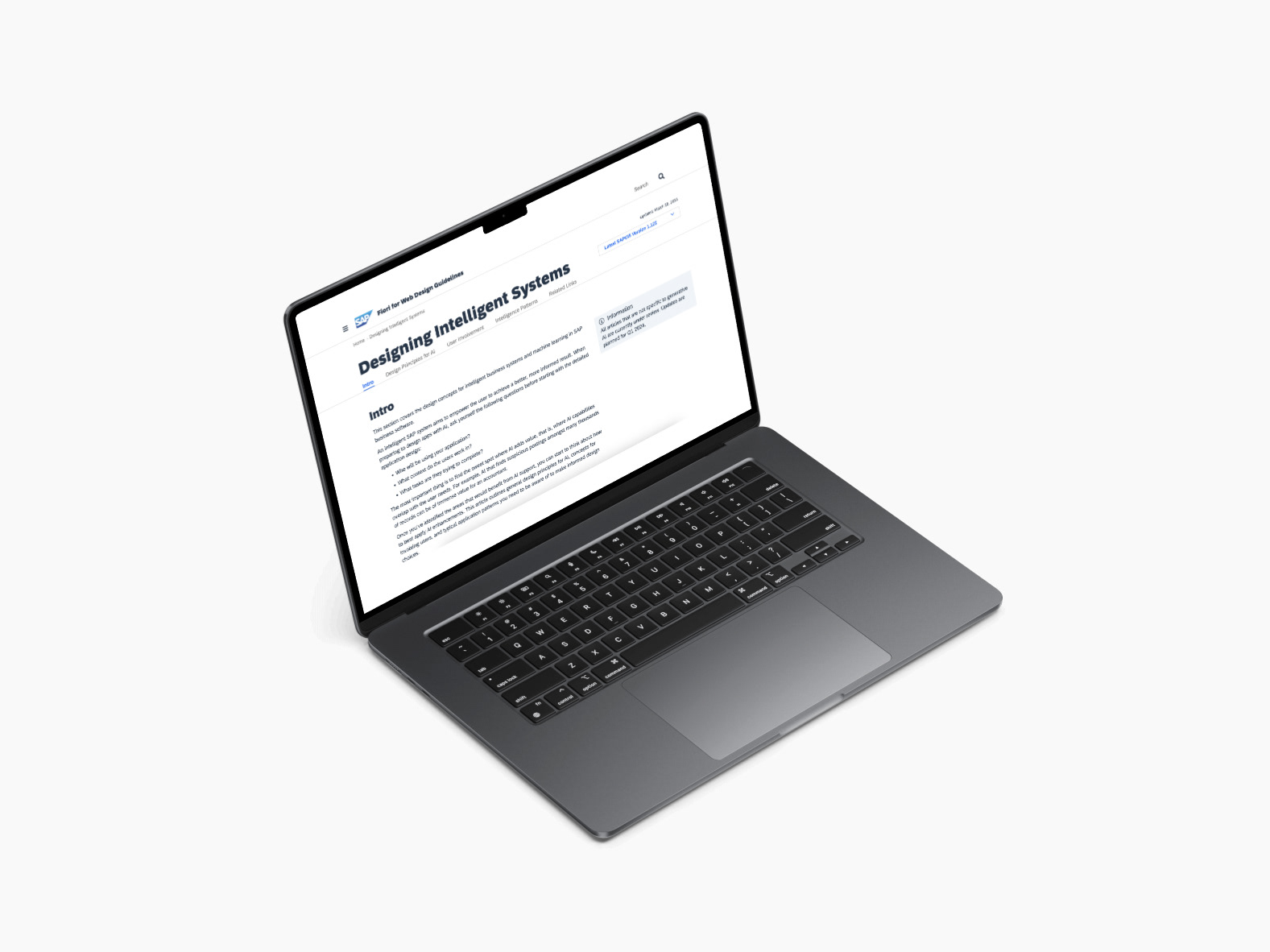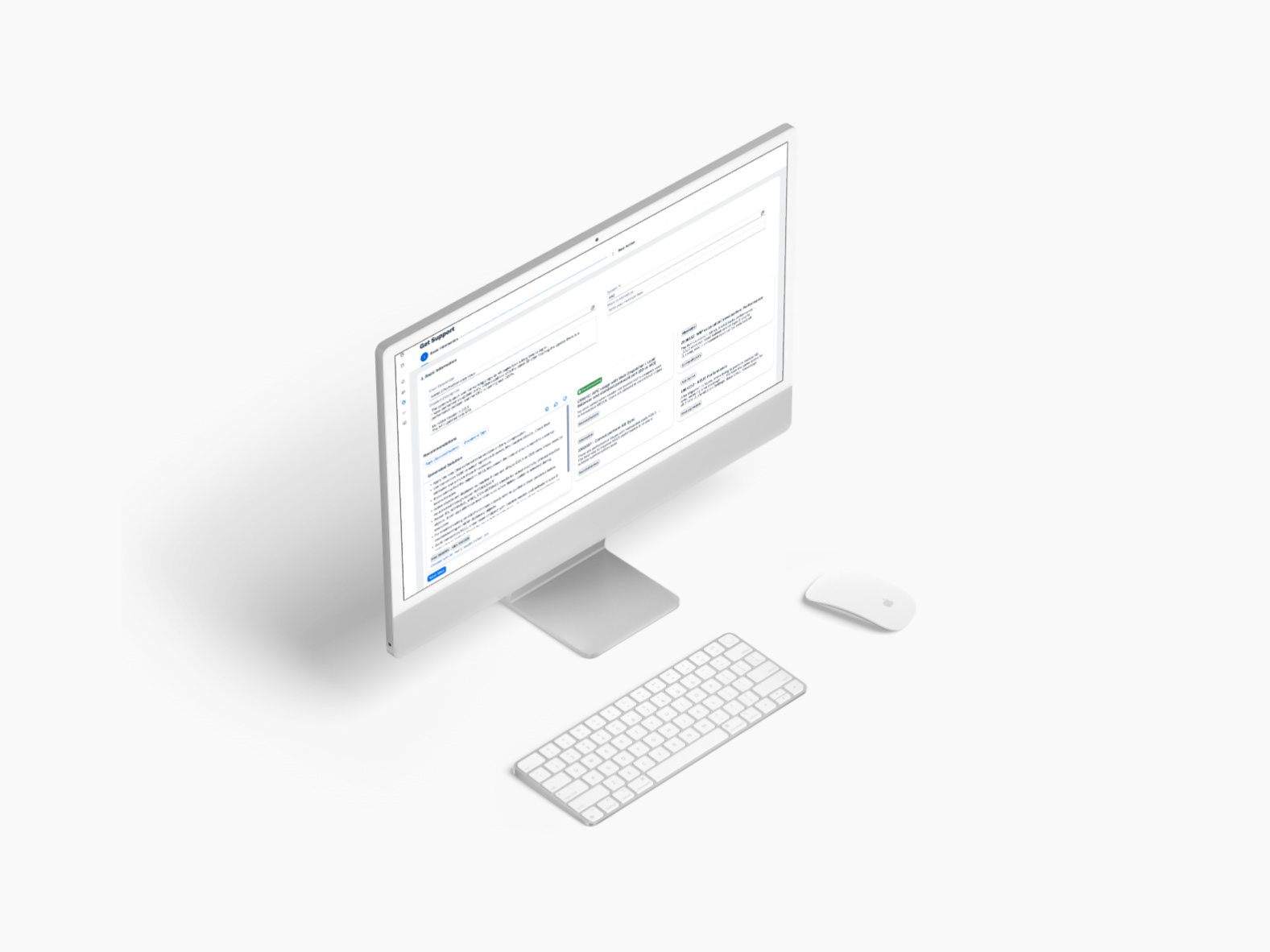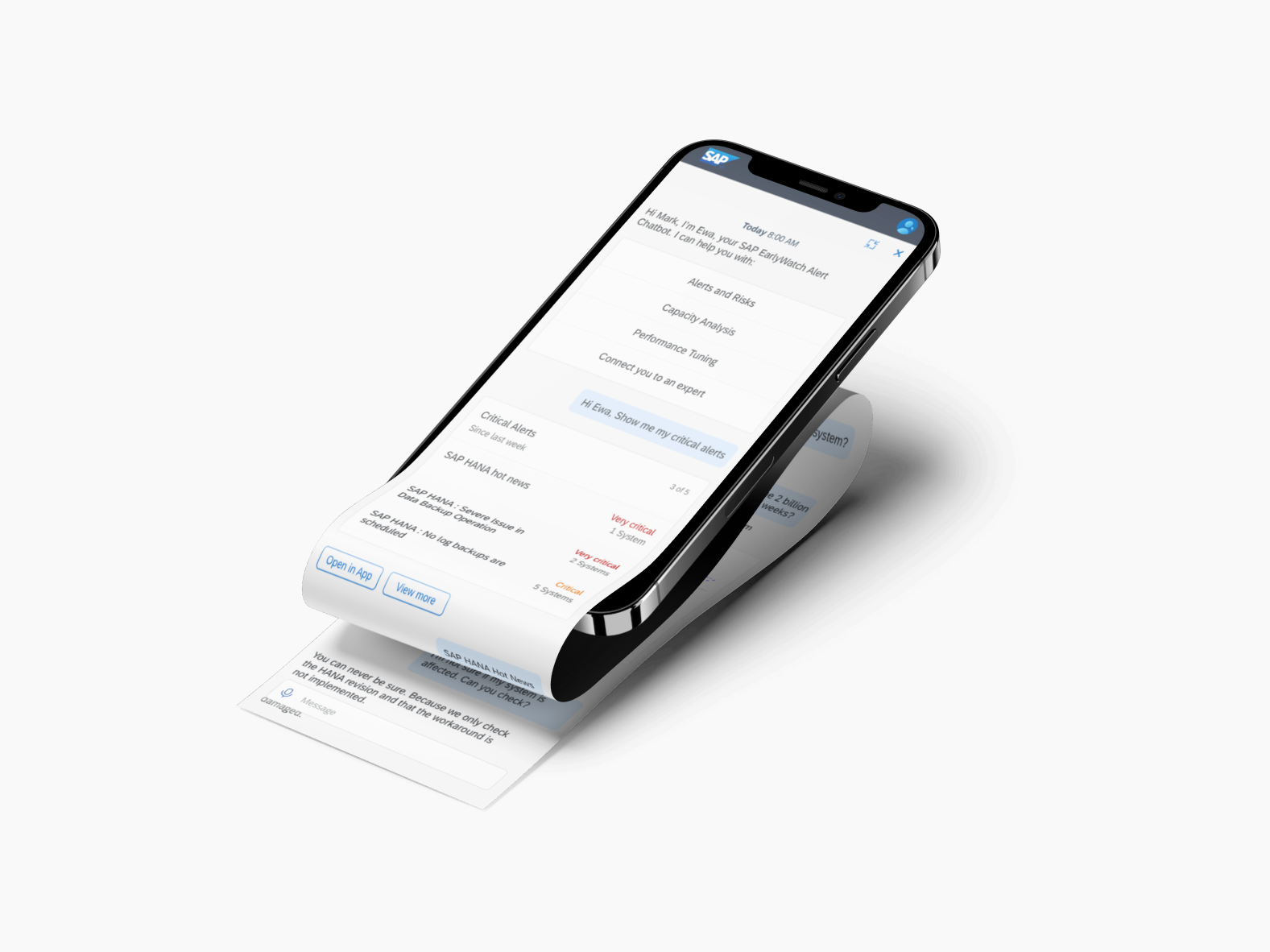Project Overview:
Conversations with a digital assistant can end in many ways. By semantics, logical sequence, explicit actions, user inactivity and so on. An understanding of how such endings happen and what users expect to see and do in such events is required in order to design a seamless experience during the conversation lifecycle.
My Role:
Led the end-to-end design process from initial research to developer handoff, which collaborating with user researchers during the usability testing phases.
Scope:
The initial stages of the project were spent understanding the project vision, scoping and coming up with realistic goals.
This project focuses on the SAP Digital Assistant web client and situations where a user might be inactive during an ongoing conversation. The project does not make assumptions specific to the user’s whereabouts when this happens and focuses on possibilities within the Digital Assistant Panel. Multi-modal and multi-channel experiences are out of scope.
Goals:
1. Understand how conversations end with SAP Digital Assistant (DA)
2. Prompts and timeout experience of SAP DA
3. How do we prompt a user that it is about to time-out if he/she is in the conversation but inactive?
4. If timeout eventually occurs, how do we inform the user?
5. Values that bot developers can use to set the prompt and timeout duration.
6. How does user start a new conversation after timeout and how can expired conversation be revisited before and after a new conversation has started?
7. How should components in expired conversation behave?
2. Prompts and timeout experience of SAP DA
3. How do we prompt a user that it is about to time-out if he/she is in the conversation but inactive?
4. If timeout eventually occurs, how do we inform the user?
5. Values that bot developers can use to set the prompt and timeout duration.
6. How does user start a new conversation after timeout and how can expired conversation be revisited before and after a new conversation has started?
7. How should components in expired conversation behave?
Research:
To understand the problem space better, I engaged in Secondary Research to enrich my knowledge through literature, existing work done on human conversations and digital assistants and their correlation.
Secondary Research methods:
1. Online Literature
2. Research Papers
3. Competitive Analysis
In parallel, I conducted primary research by direct interaction with potential end users.
Primary Research methods:
1. Wizard of Oz studies
2. User Interviews
Insights:
The above research helped gather valuable insights. The insights centered around these topics:
1. Factors that affect conversation timeouts
2. Values for timeouts
3. Digital Assistant Panel UI after timeout
Ideation
To start ideating on initial designs, I looked for inspiration in the industry and tried to understand why conversation timeouts for certain assistants are designed in a certain way and explored how this could work for SAP Digital Assistance
Gathering inspiration
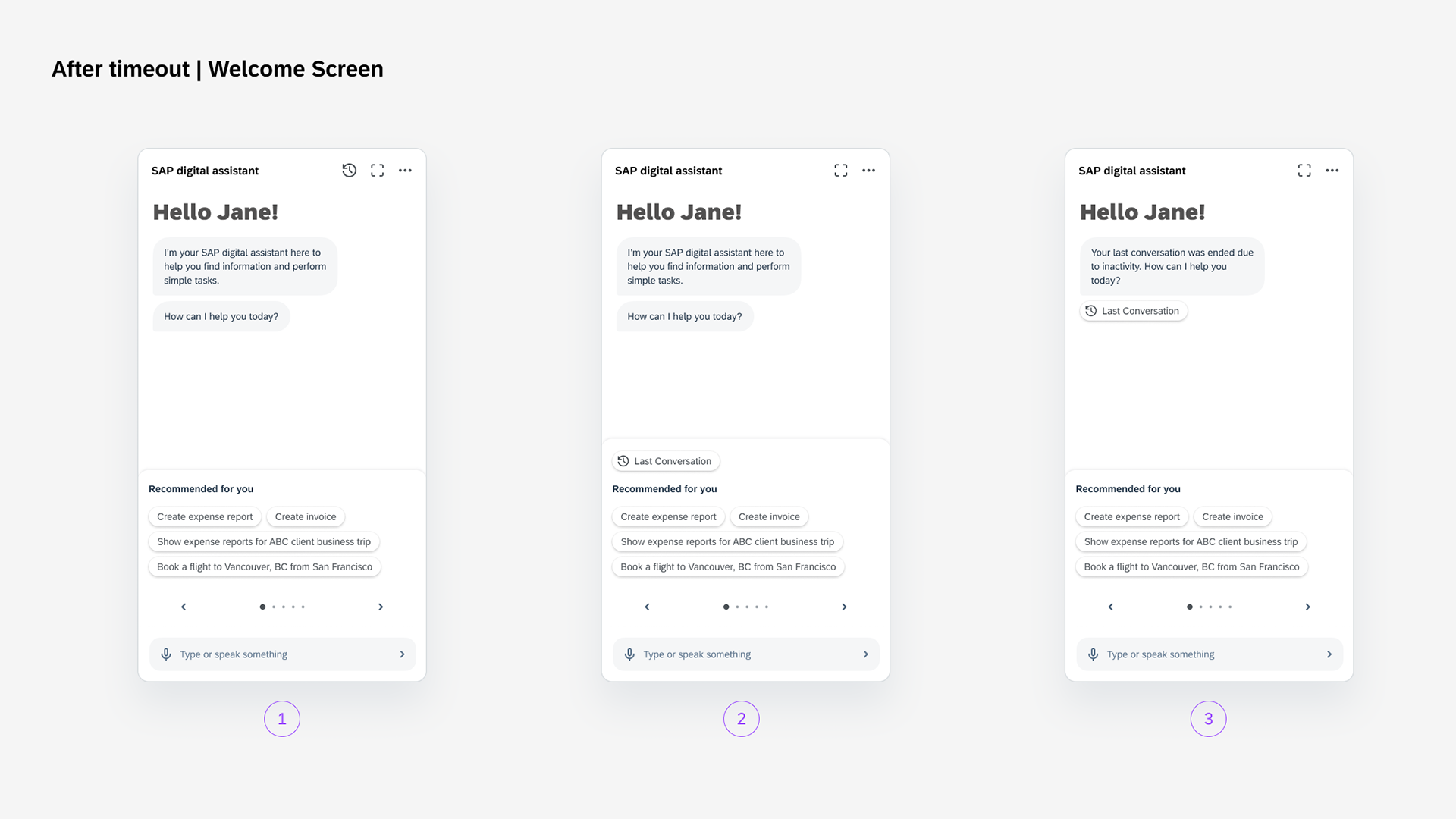
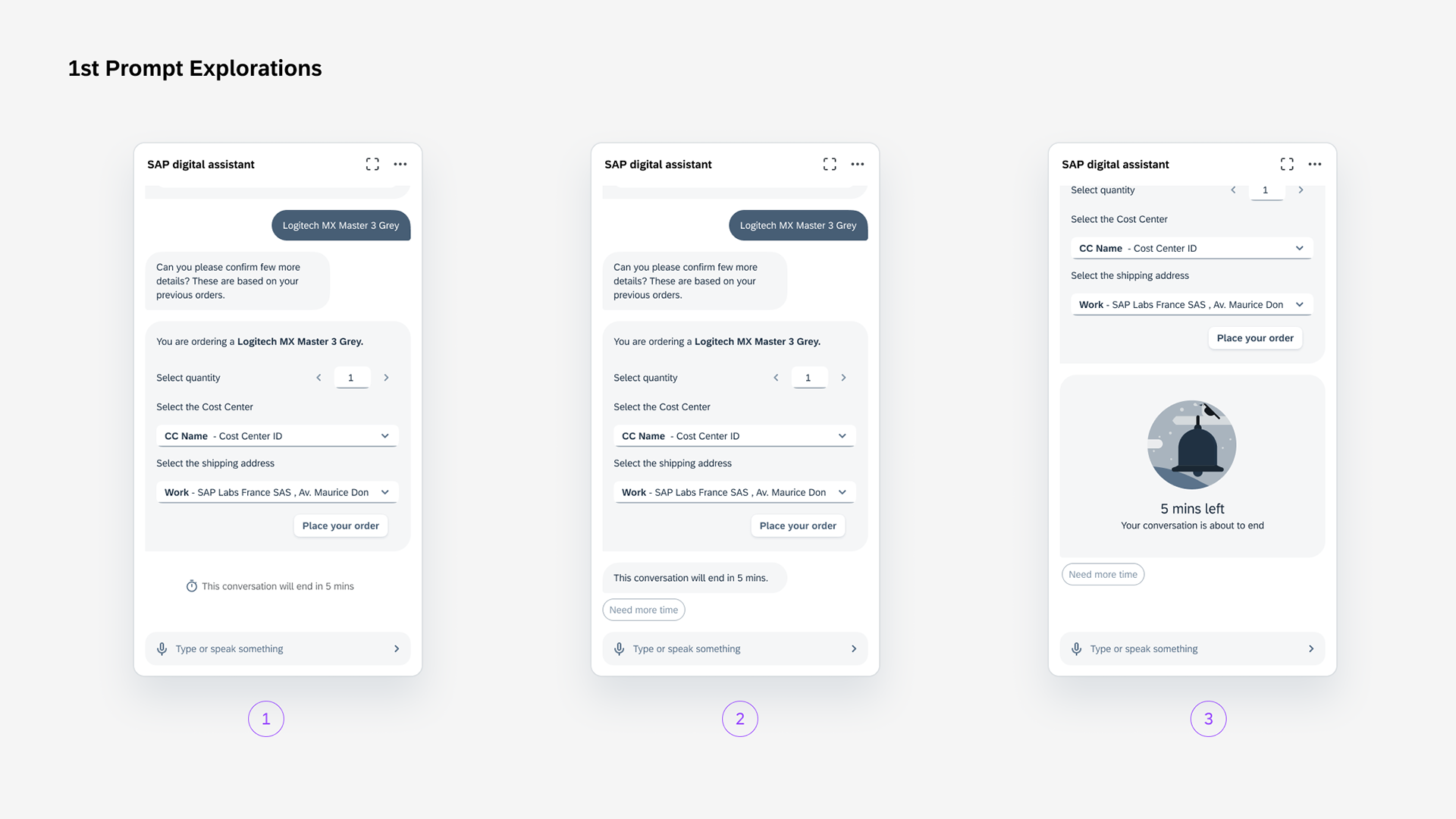
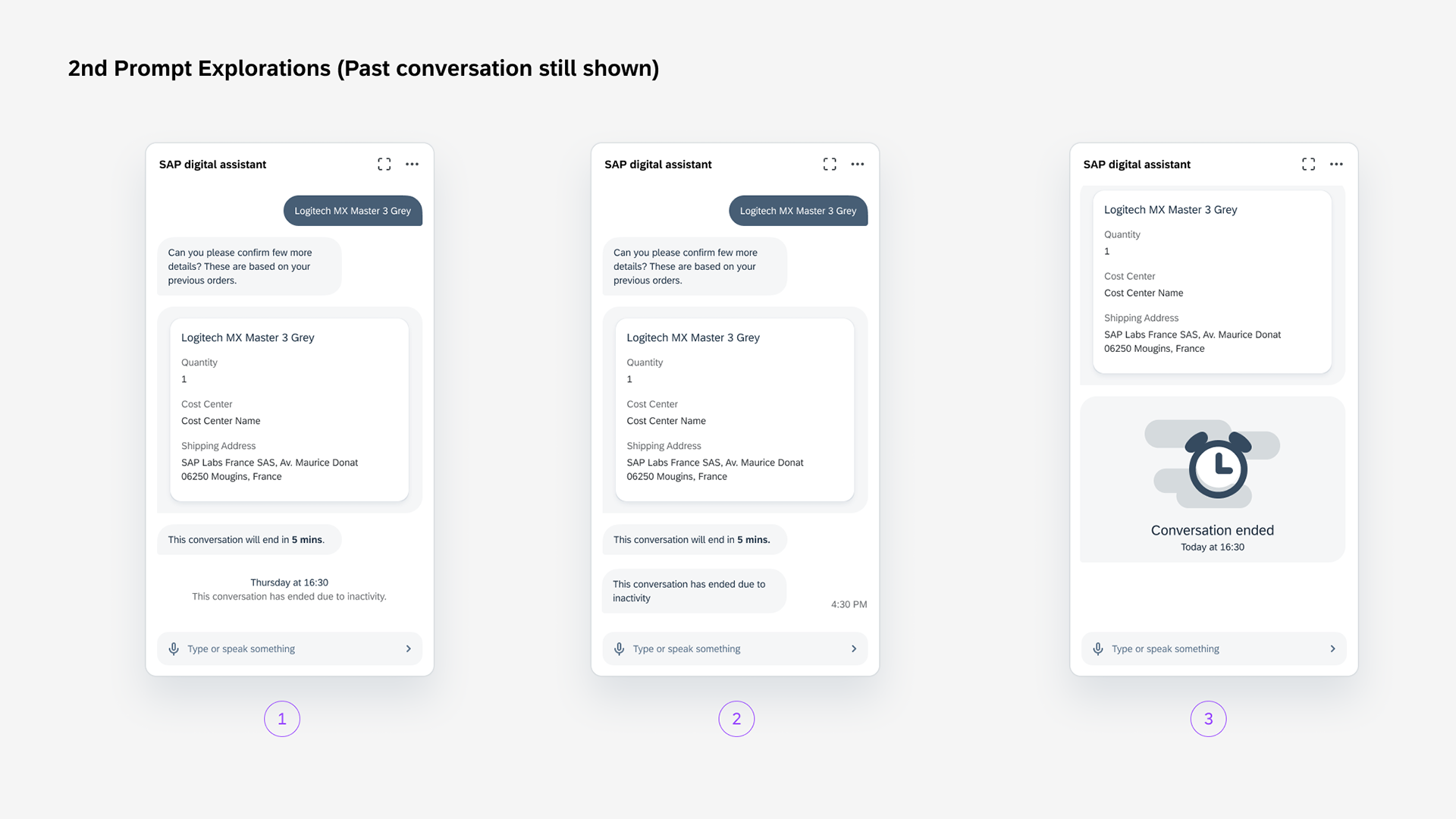
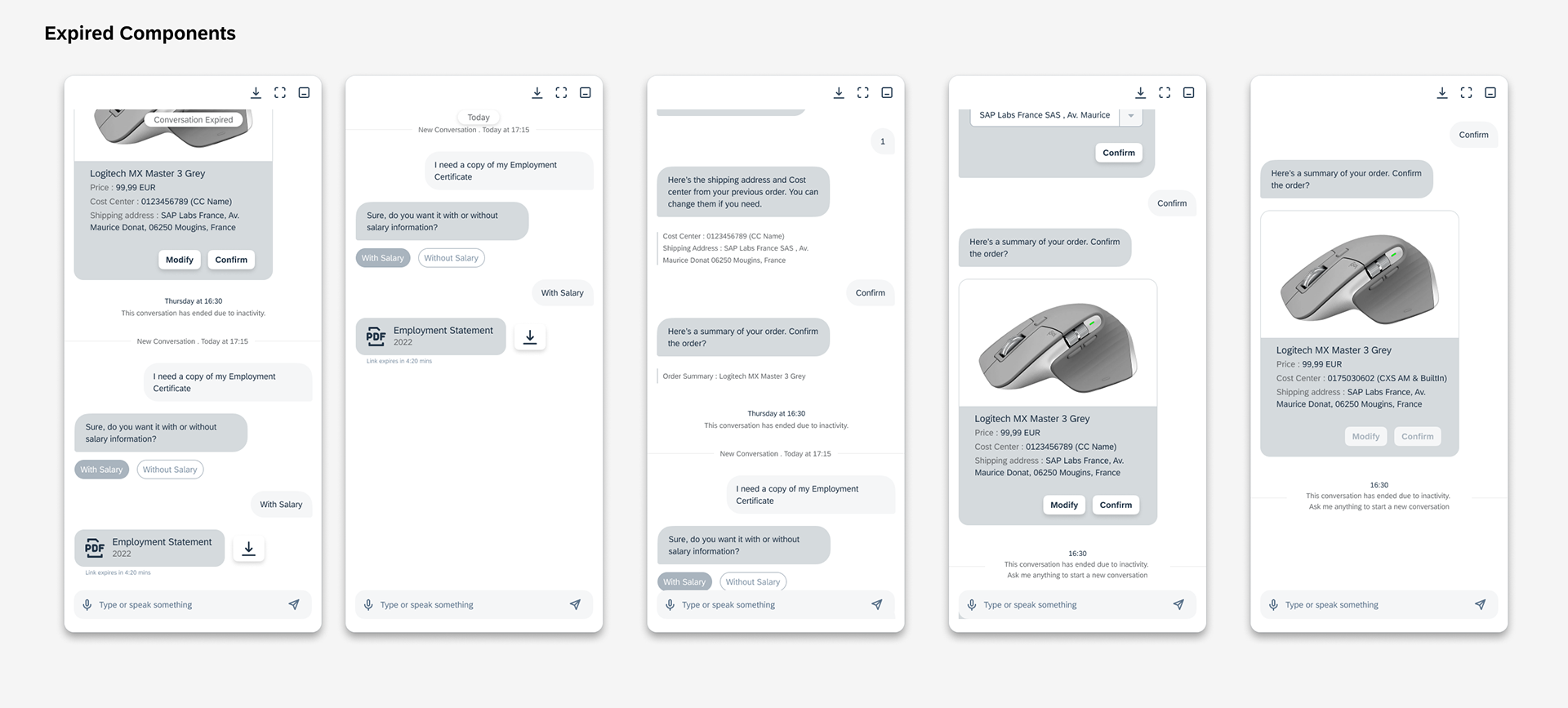
Research Phase 2 - Usability Tests
Based on initial ideation, low-fidelity mockups were designed. I collaborated with User Research colleagues to establish research goals and designed interactive prototypes to aid in usability testing.
As a result of usability tests, several insights were gathered around Timeout prompt expectations, resuming conversations, saving conversations, screen transitions etc. , in addition to granular aspects such as appearance, color, message displayed, illustration used etc.
These insights guided the design of high-fidelity mockups.
High-Fidelity mockups and prototypes

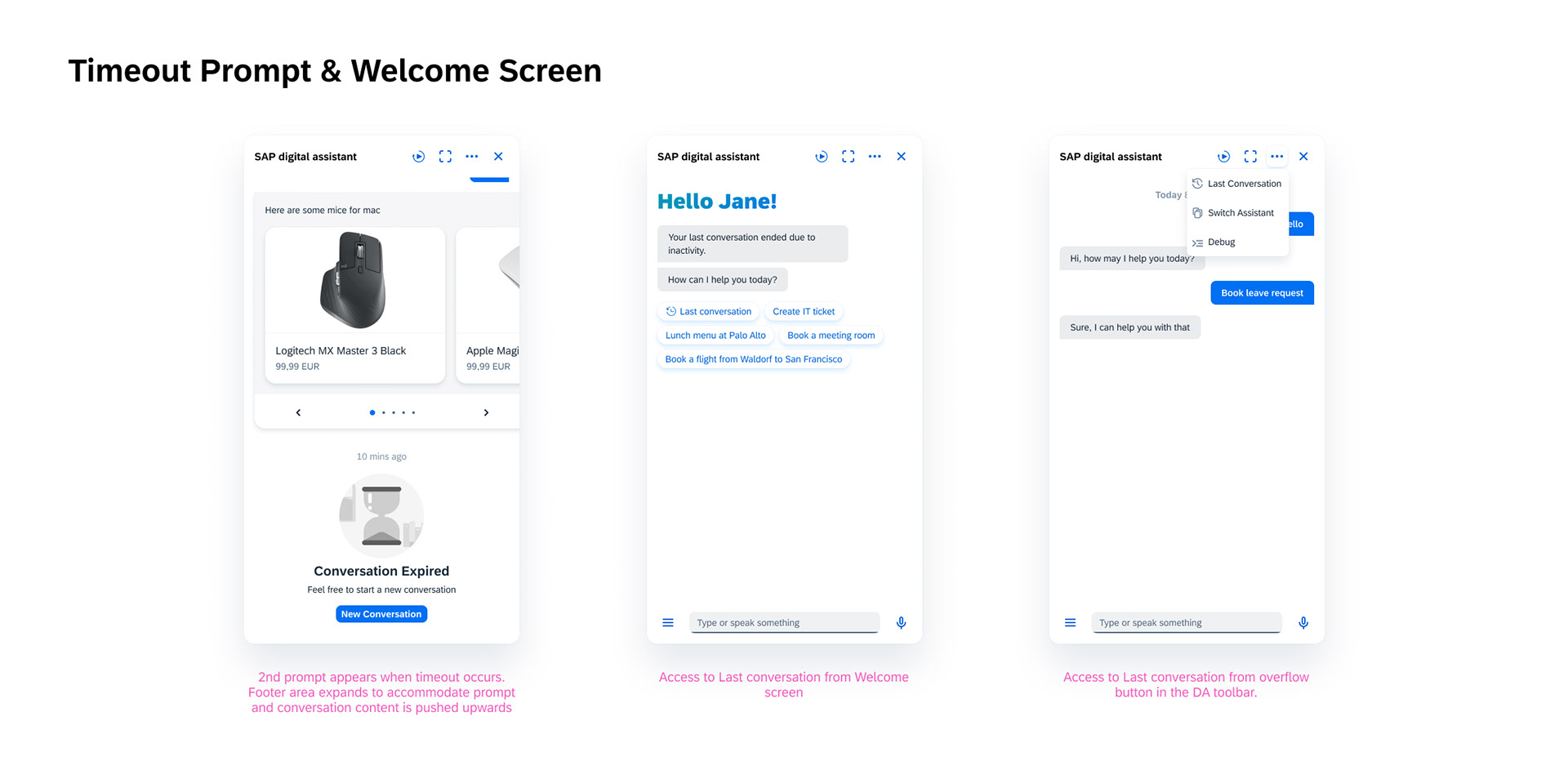
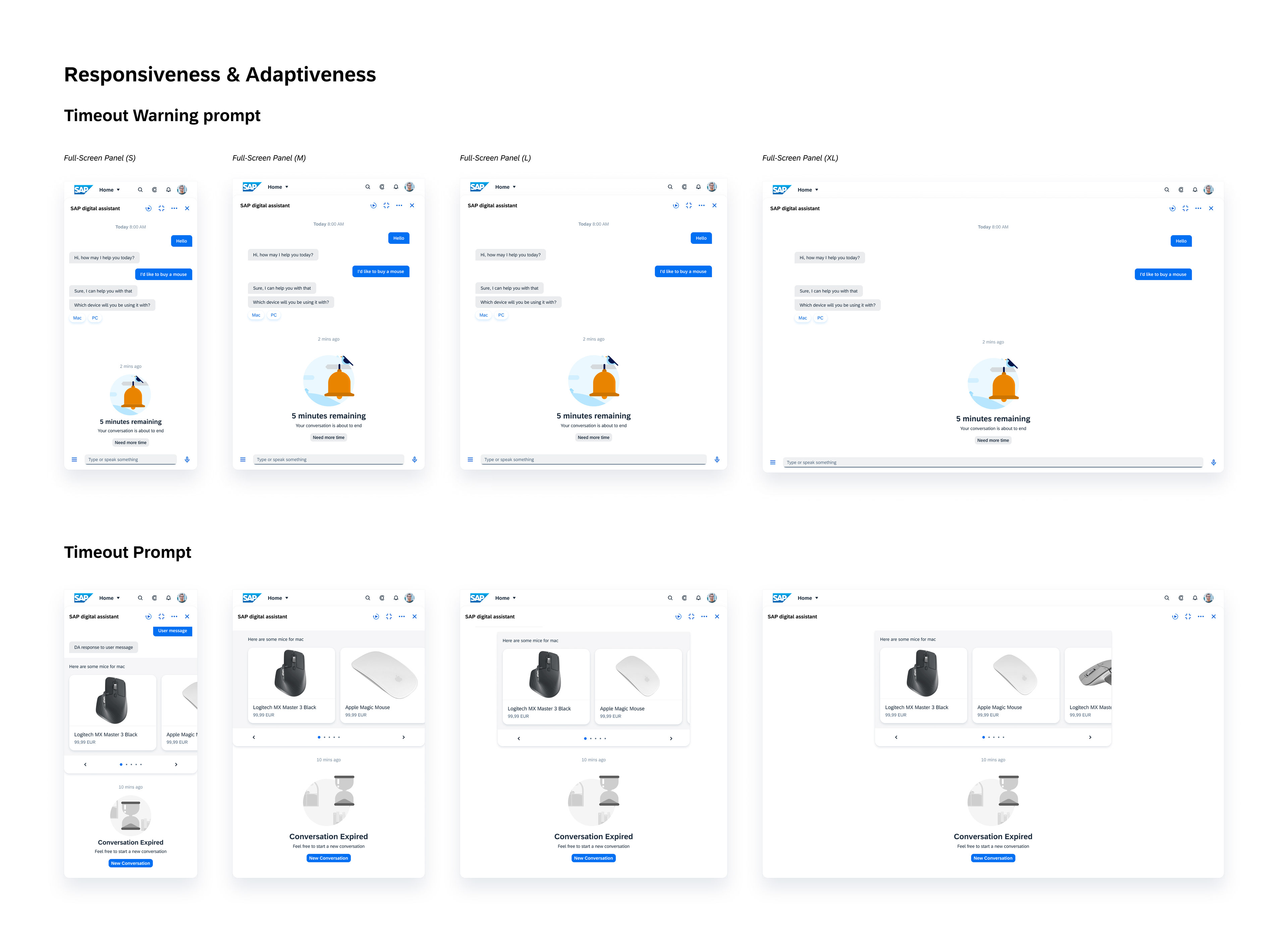
Prototype for 1st prompt with extension
Prototype for conversation timeout
Guidelines:
Once designs were signed off on, I began authoring guidelines for usage of the conversation lifecycle concept for designers and developers across SAP.
Outcome:
1. Successfully designed the timeout and welcome experience for the SAP Digital Assistant.
2. Created Design System components for timeouts.
3. Design specs were successfully implemented and used in the SAP Digital Assistant (now Joule)
